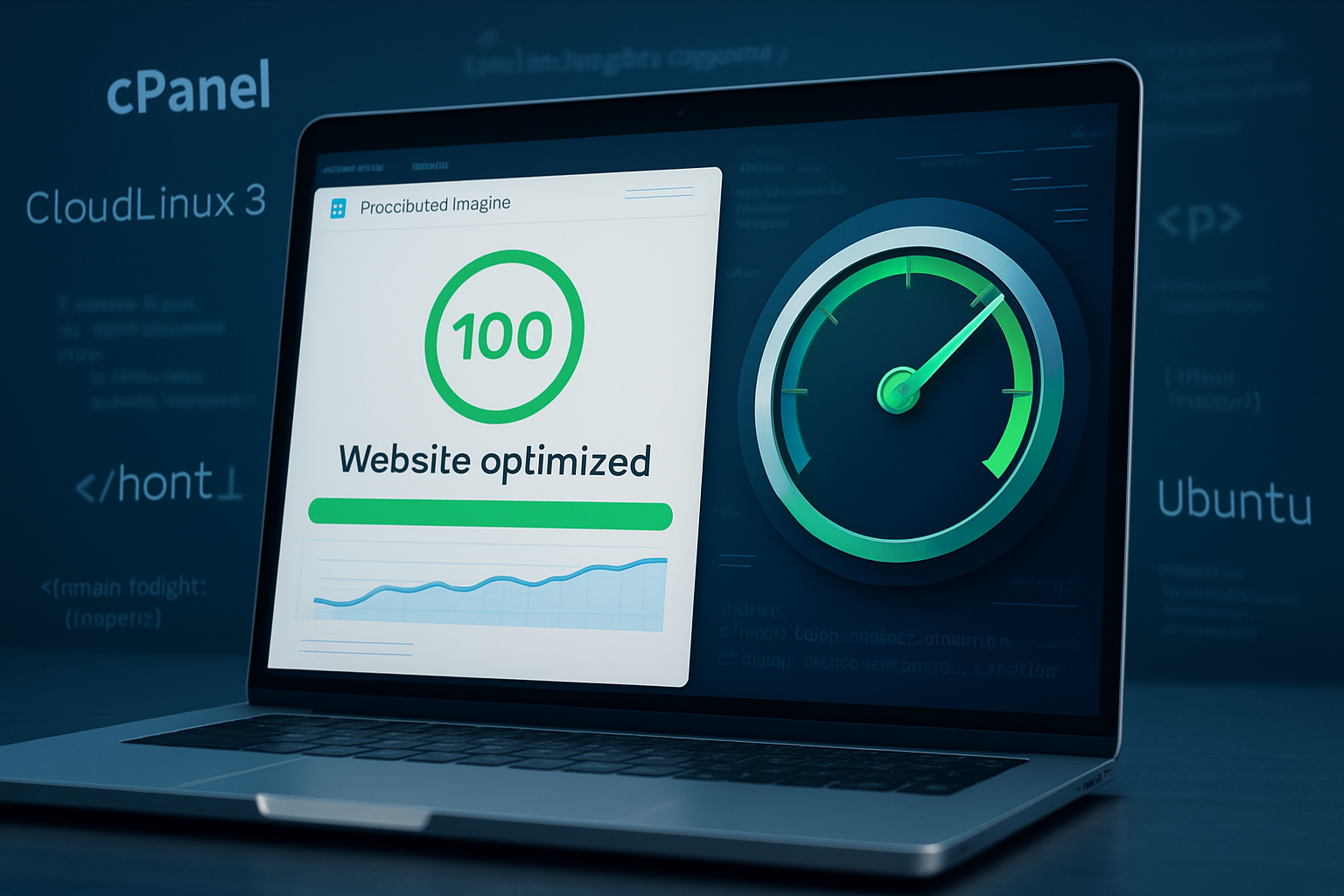
Introduction
The loading speed of your website is a critical factor for the success of your online business. Users expect pages to load quickly, and if your website takes more than a few seconds to load, you are likely to lose visitors and potential customers. In addition, loading speed is a key factor in SEO, as Google takes into account how fast your site loads when ranking it in search results.
In this article, we will explore how you can effectively increase the speed of your website. From optimizing images to choosing the best hosting service, we will give you a complete guide to improve your site's performance and provide a smoother and more enjoyable user experience.
Table of Contents
Optimize your website images
What it is: Images are often one of the main culprits of website slowness. High resolution images can take up a lot of space and slow down page loading.
Why it is important: Compressing images without sacrificing quality significantly improves site loading speed.
Key elements:
-
Adequate format: Use modern formats such as Web instead of JPEG or PNG for better quality with smaller file size.
-
Lossless compression: Use tools such as TinyPNG or ImageOptim to reduce the size of images without losing quality.
Example: An online store that displays products with large images could reduce load times by compressing and using Web-formatted images.
Minimizes CSS, JavaScript and HTML code
What it is: Unoptimized code (CSS, JavaScript, HTML) can slow down the loading of your page, especially if it is overloaded with unnecessary lines of code.
Why it is important: Minimizing and compressing the code reduces the amount of data to be loaded, improving speed.
Key elements:
-
Code minification: Use tools such as UglifyJS for JavaScript and CSSNano for CSS, which remove unnecessary spaces, comments and lines.
-
Load scripts asynchronously: Make sure that JavaScript scripts are loaded asynchronously so that they do not block the loading of other resources.
Example: A blog that uses analytics scripts can benefit greatly from loading those scripts asynchronously, preventing them from blocking the loading of the main content.
Uses an efficient cache system
What it is: Caching allows to temporarily store site data in the user's browser, which reduces the loading time when the same user visits the site again.
Why it is important: Correctly configuring the browser cache can significantly improve loading speed for recurring users, as it avoids the need to load all resources from scratch.
Key elements:
-
Browser cache: Configures cache headers so that static resources, such as images and CSS, are stored in the user's browser for a set amount of time.
-
Page cache: Use page caching tools like Varnish or WP Super Cache to store a static version of your page and deliver it quickly to users.
Example: A landing page that is visited regularly can load much faster for returning users thanks to the use of caching.
Improve the speed of your server (Hosting)
What it is: The quality of the hosting directly affects the loading speed of your site. A slow server can make even optimized sites take a long time to load.
Why it is important: Choosing quality hosting, such as a dedicated server or a VPS, instead of shared hosting, can significantly improve load time.
Key elements:
-
Choose a good hosting provider: Make sure your hosting provider offers high capacity servers and good technical support.
-
Server close to your audience: If your audience is located in a specific region, choose a nearby server to reduce latency.
Example: If your audience is in Latin America, choosing a server in the region will reduce response time and improve the loading speed of your site.
Uses a CDN (Content Delivery Network)
What it is: A CDN (Content Delivery Network) distributes your content across a global network of servers, allowing users to load your website from the server closest to their location.
Why it is important: A CDN improves loading speed, especially for international users, by reducing the physical distance between the server and the end user.
Key elements:
-
Content distribution: The CDN stores copies of your site's content on multiple servers around the world, which reduces waiting time for users.
-
Image and static content optimization: The CDN can also compress images and static content, which further improves speed.
Example: If you have a global site with users in different countries, a CDN like Cloudflare or AWS CloudFront can drastically improve load times.
Ready to improve the speed of your website and provide a better user experience? With ClickPanda, you can get optimized hosting and access advanced tools to improve your page load speed.
Conclusion:
The loading speed of your website is an essential factor to improve the user experience and ensure a good position in search engines. By applying image optimization strategies, code minification, caching and choosing the right hosting, you can increase the speed of your site and offer a smoother experience. Don't underestimate the impact of speed on SEO and conversions: improve your site speed today to ensure your digital business is ready to grow.
Improve the user experience and optimize your site with these strategies, especially if you are considering the online store model. If you still don't know whether it's better to have your own store or join a marketplace, you can read more about the advantages and disadvantages of both in our article Online stores vs Marketplace: Which is the best option for your business?.








